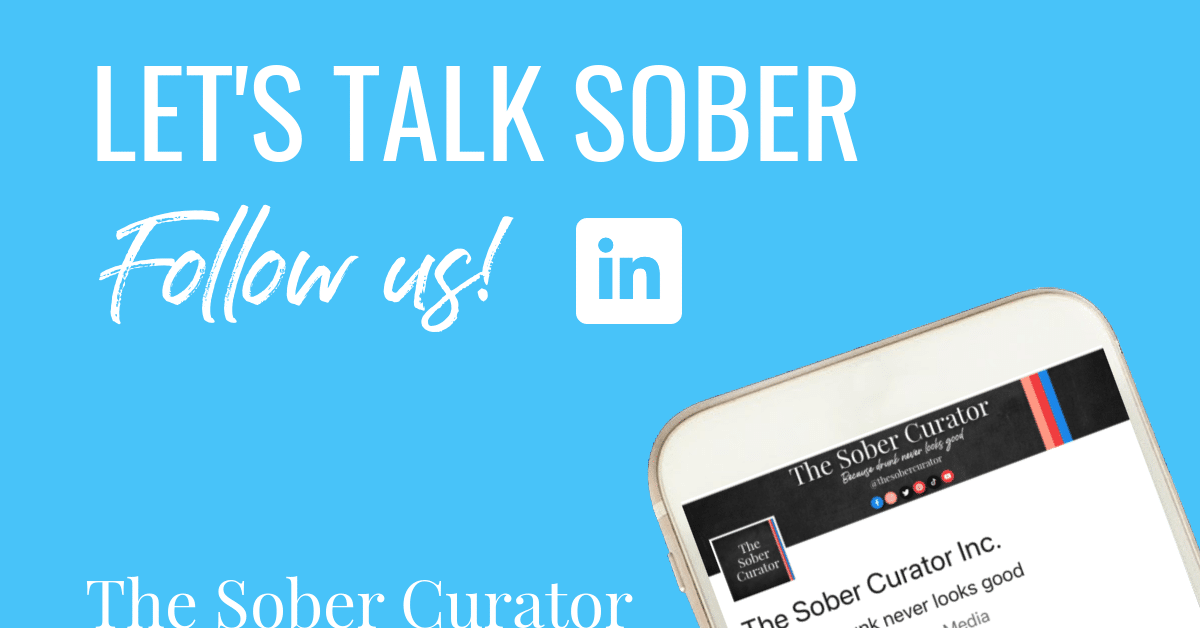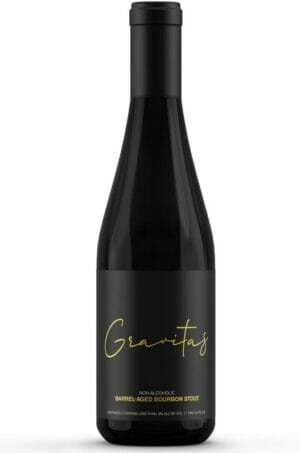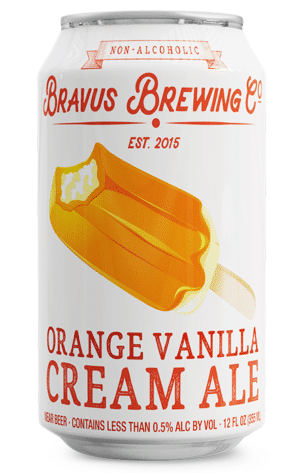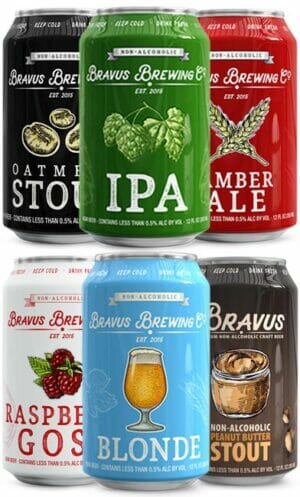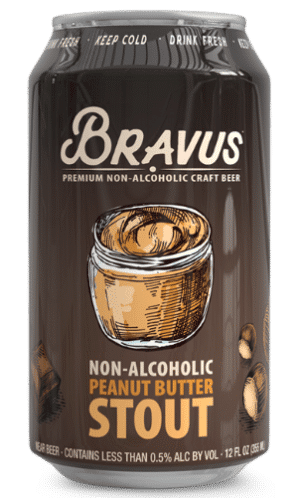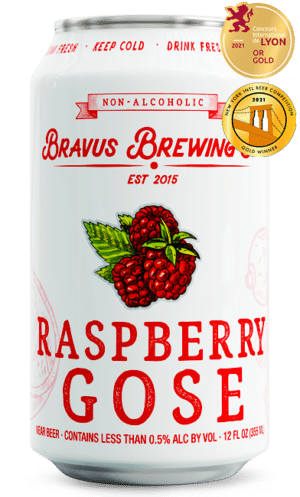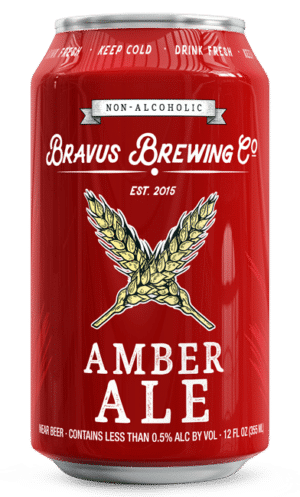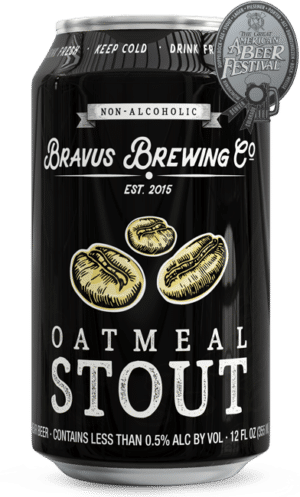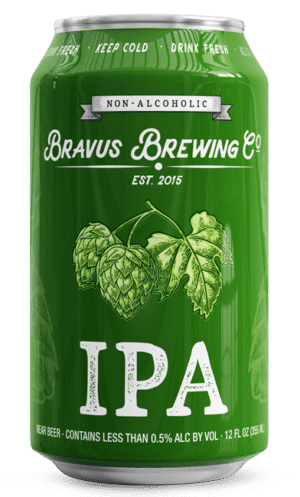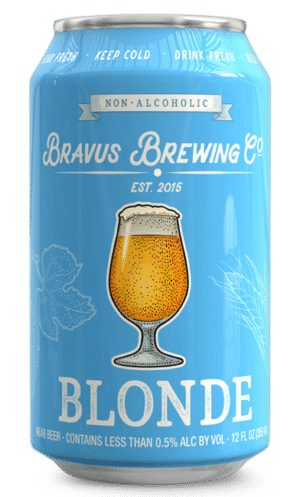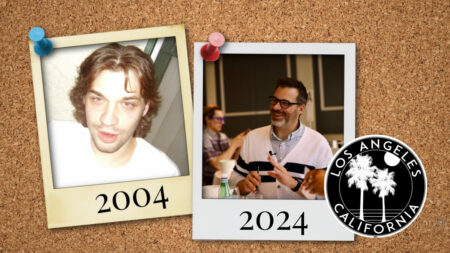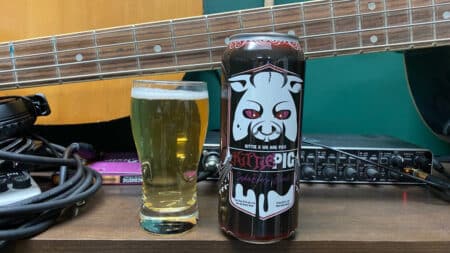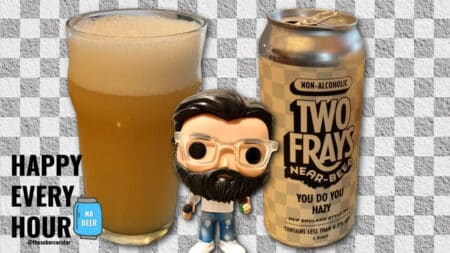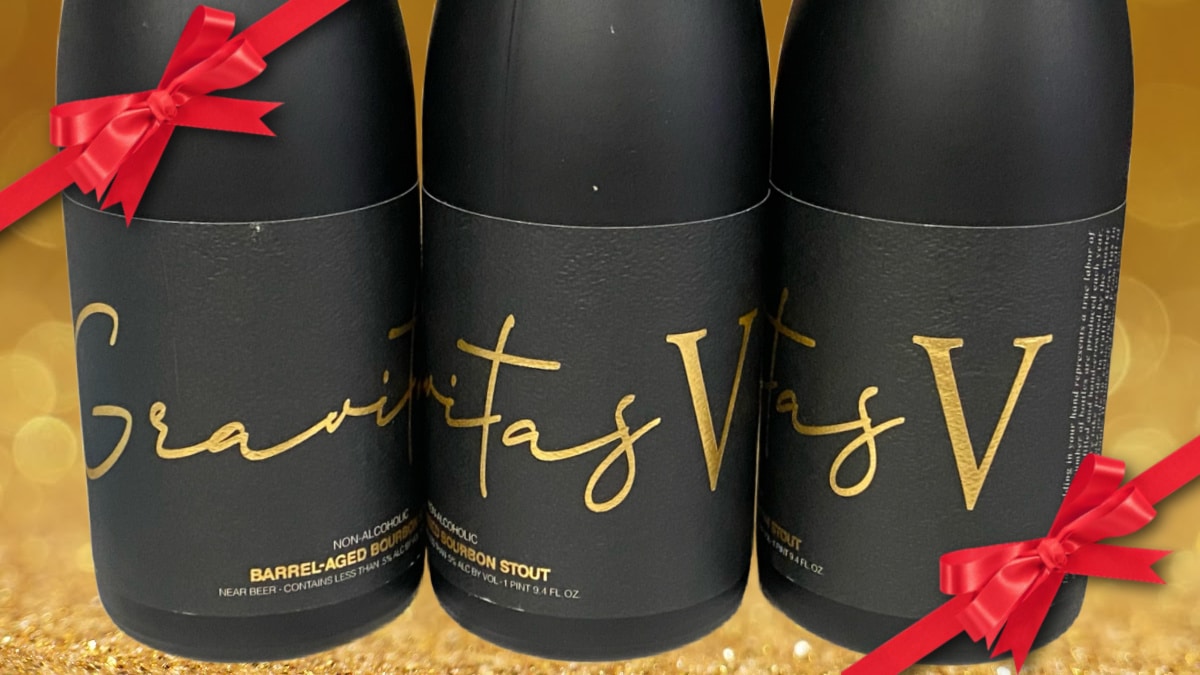
In this insightful conversation, Justin Lamb, the host of the Friend Request Podcast and Sober Curator of the Happy Every Hour NA Beers & 90s Column, sits down with Philip Brandes, the Founder of Bravus Brewing. The two kick off their discussion by catching up on each other’s lives and recent achievements. Justin expresses his excitement over seeing Philip’s name in press releases related to Gravitas, a topic they plan to delve into later in the conversation. They then shift gears to talk about Philip’s unconventional entry into the beer industry. With no prior experience in the beer space before 2015, Philip shares his journey from writing software code to brewing non-alcoholic beers, a transition fueled by a friend’s struggle with alcoholism and the lack of satisfying non-alcoholic beer options in the market.
Friend Request Podcast: #153 – Philip Brandes, Founder of Bravus Brewing Co.
Philip Brandes is the founder of Bravus Brewing and a former computer programmer. He discusses how he got into the non-alcoholic beer space, as well as the how his brewing method is different than his competitors. Philip also discusses the logisitcs of the supply chain and why the NA beers had to stop calling themselves by their names, like dark instead of stout. He also talks about the latest barrel-aged release, Gravitas, and where he sees Bravus in relation to the sober community.
Taste it for yourself! Head over to Bravus.com and use code FRIENDREQUEST at checkout to save 10% on your order!
#ADDTOCART BRAVUS BREWING
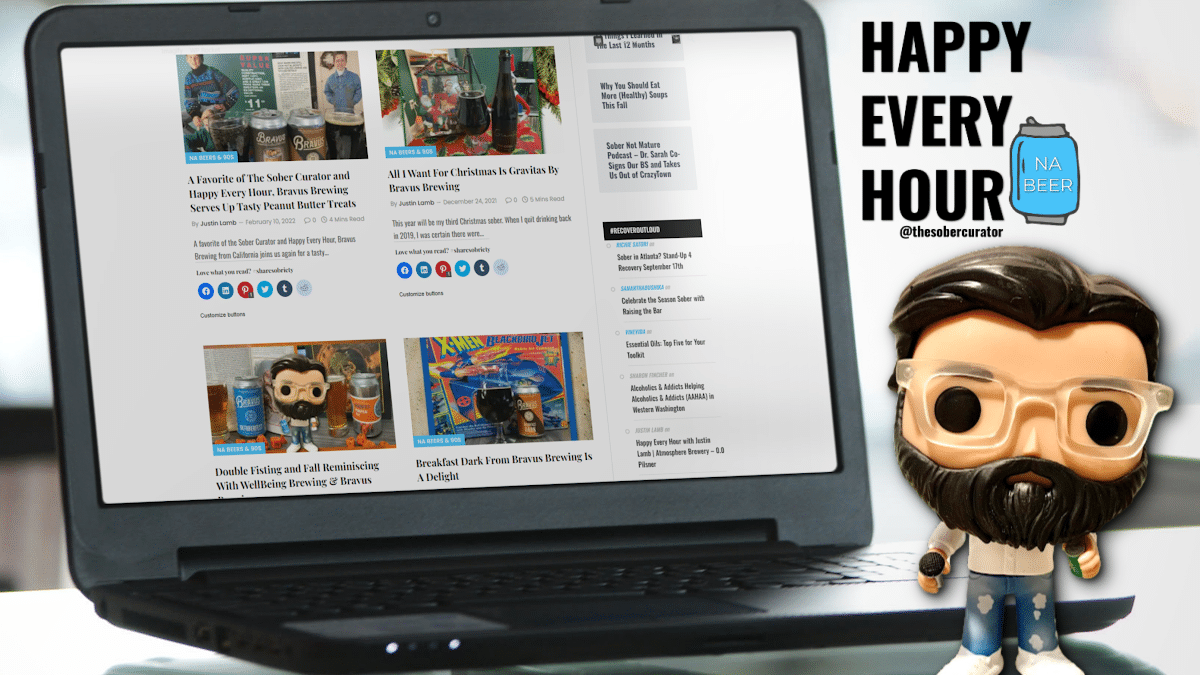
Friend Request Podcast Transcript: #153 – Philip Brandes, Founder of Bravus Brewing Co.
Justin Lamb: Hey, Phil, how are you doing?
Philip Brandes: I’m doing well, how are you?
Justin Lamb: Not too bad! I was happy to see your name pop up in the press releases and everything for Gravitas, which obviously I want to get to eventually and talk about, but you know, if you have the time to dive in, I’ll kinda play by your rules and go from there.
Philip Brandes: Yeah, of course. You tell me what you want to get into, and we’ll get into it.
Justin Lamb: Perfect! Well, yeah, if we can start with you specifically, you were not in the beer space at all prior to 2015, right?
Philip Brandes: Correct. Yeah. I was doing something probably the farthest removed from making beer and that was making software code. It’s been a wild ride, as you know, and you’ve been there almost since the beginning as well. This category still lacks awareness, but obviously it’s doing quite well, especially up against alcoholic beer, and so it’s been a trip. But yeah, how did I get started? Is that what you wanna know? Well, I was doing some software code and I have a good friend of mine who was a big craft beer nerd/junkie/aficionado, and he was home brewing. Gosh! When we were at high school. He was sitting there fermenting up strange concoctions. Something called an IPA, which I had no idea was at the time, and took a sip and spit it out and told him “Look, you’ll never make anything as great as a light [beer]. So good luck to you.”
Fast forward: IPAs became the force that they are, and craft beer, in general. And of course, right around that time, maybe a little bit earlier, brewers were like, “Let’s see how much booze we can stick into a craft beer. Let’s make a double IPA, triple IPA. Let’s take an imperial stout and barrel age it. Let’s make it 5 billion percent!”
And to me, beer was always something you drank cold, you drank fast, and you drank a lot of them, and here was something else: You drank it slowly, you know, it tended to get warm after a while, and, boy, it sure knocked you on your ass. So he, my friend, unfortunately developed an issue with it, and it got to a point where his wife said, Look it’s either our family or the beer, and for a young guy, it’s a hard decision. So he chose wisely. He chose the family and gave up the beer, but went to the ubiquitous of O’Douls and Sharps, and all the other grocery lagers at the time, and it was just so disappointed.
I felt for the guy and to the point where I said, “Look, I tell you what, I’m looking for something different to do. You teach me how to home brew, I’m going to come up with a solution for making a good tasting NA beer and we dove into it; built a little brewery in the garage, and he taught me to homebrew and got all the equipment and we went through all the different NA beers at the time and I realized that we had to change the way we made them if this category was going to succeed, because again, it’s it was faced for many decades with pretty bad product.
So I found some research and, using a little bit technology that that I was using, I figured out a way that, with the help of a very smart microbiologist, we just don’t remove the alcohol, because again, when you remove the alcohol, I think it leads to bad things like- If you’re a great chef, you don’t make a dish by putting ingredients in and then taking them back out. Bad things happen. So her and I work together on a process that, we just don’t produce a lot of alcohol in the first place through some proprietary yeast technology, brewing methods, things like that. It’s a huge pain in the ass, the process, but at the end of the day, it makes things like Gravitas. It makes things like our liquid and I think our liquid is among the best out there, and allows us to make very wide ranging styles and we can apply the technology to other products that we’re coming out with, such as wine spirits and RTDs.
That was sort of the long way around it, but here we are today. We’re operating out of Anaheim now and it’s a pretty amazing space. And one of the few breweries I think to call it our own space, which is nice. We have to work on consistency. That’s always the hard part. We’re making beer. Anyone can make a beer, but to make the same beer over and over again is the hard part.
Justin Lamb: I’m curious about that, because obviously there’s a lot of numbers being thrown around now about NA beer and during the pandemic it was a 30- 35% YOY growth, and you’d want to hear that, but there are all these little breweries coming up. That was one of my favorite things about alcoholic beer- and it’s funny your theory on beer of drinking a lot of them and drinking fast is what got me in trouble -but one of the things I loved about it was the variety, right? It became such a saturated market that you could get anything you wanted. You want a jalapeno chocolate IPA? Sure! Someone’s going to be making it and it’s probably going to have a weird monkey on the label. I liked that appeal a lot. That was one of my favorite parts about the craft beer industry. You really could try a different beer every day and never be done.
Then, with the NA space, to see it explode the way it has- It’s a huge space now and you see something, which Bravus has been doing since the beginning, and that’s people making these small batches. You get these little fun things like Orange Creamsicle Ale. I love that because you’re starting to get these things offered from a lot of different people. But Two Roots Brewing closing down earlier this year concerned me because I was like “Uh oh! Is this market becoming too saturated? Because not everyone’s sober, and I don’t expect that to be a thing, but as far as the marketplace goes, you have a lot of people that get Bravus and stuff to interchange, right? They’ll have a couple alcoholic beers and then they’ll have a couple of Bravus beers, you know? Balance it out, which is a healthy decision.
Philip Brandes: We call that Zebra Striping.
Justin Lamb: Perfect! But I’m wondering if there a sustainability for the smaller breweries. Because, you know you can open an alcoholic brewery in a small town and the locals can keep that overhead going while they’re brewing beer, but you open a non-alcoholic brewery in a small town, you’re kind of fucked unless you have distribution right away and you’re good at it. So, I’m just concerned that Two Roots closing was a sign of an over saturated market and I’m wondering what your thoughts are on that.
Philip Brandes: Yeah, absolutely! You brought up a lot of great points! I mean the pandemic was a big eye opener for local taprooms and local bars and, to sustain operations it is difficult. Packaging distribution is a very expensive proposition for people. I mean that those that have kegs, and we’re headed that way, really, that’s the way to do it. The package: the can, the lid, the pack, the case tray- the liquid’s the cheapest part. Everything else is very, very expensive, and unless you’re buying all those things in very great quantities, you know, there’s huge quantities of scale and buying, packaging and canning it, and the labor and things like that. Then distribution with their commissions and things like that, for any brewery is tough. You have to really get to scale to succeed, and it requires capital. I think at the end of the day, it’s just a matter of having enough money to sustain that growth while you grow; so, you can get to a point of economies of scale, get that distribution, get sell through.
Now, competition is definitely playing in these days, and it’s still, at the end of the day, a very small market. So I think if you’re not diversifying into other sides of [non-alcoholic beverages] such as wine, spirits, RTDs, it’s going to get tough. At the end of the day you have to build a brand, right? We came up, and we were one of the few, and people drank us because there’s nothing else to drink. But as we move forward here you do have to start building a brand. You still have to get that awareness. Look, plenty of beverage companies get enough money and can have crappy product and do quite well. But you know, I think it’s easier, obviously, that we have a little bit of both. I mean, it’s old-fashioned capitalism, right? It’s going to get competitive.
Non-Alc has only been out a couple of years. There’s not data and even retailers and wholesalers we talk to everyday are like “Why, what’s the point?” I think you have to realize that, like other categories, competition does play a key role in what’s going on these days. It’s getting more and more crowded because everyone has an NA now, and even the smallest brewery in Podunk is coming up with an NA. But I think for us, we’ve always had an eye on serving a national brand, so distribution is the key, and not just domestically, but sending product overseas. We’re going to South Korea now; Japan and China. We’re seeing a lot of uptake there because those guys were ahead of the curve, doing NAs far prior to us doing it.
I was sad to hear about Two Roots, but I think, like you mentioned, competition has something to do with it, and then just expanding, getting into different territories across the across the state. We’re finally seeing retailers, and retailers are the are the bellwether, because retailers push the distributors which push us to get products onto the shelf. Retailers like Target and Walmart are being very strangely progressive about Non-Alc. They’re leading the charge by putting in, not just [non-alcoholic sections] for beer, but [non-alcoholic sections] for everything: wine, spirits, RTDs. They are getting to that place far quicker than the Kroger’s and the Albertsons of the world. I think the uptake maybe, was too slow to be able to sort of expand as fast as one needed to get to those kinds of scale to build the brands out.
Sober Curator Pro Tip: You can read Justin’s feature on Two Roots closing: Two Roots Brewing Co. Has Shut Down « The Sober Curator
Justin Lamb: It feels like such a huge victory as someone that doesn’t drink alcohol at all to be walking into somewhere like a Target and seeing a 4-foot section. That’s a huge leap forward from a year or two ago.
Philip Brandes: Yeah, it’s still four feet, right? I think Total Wine got to eight feet and they’d been a leader. But jeez, with all the brands coming out, you can’t build a category that way. You have to expand the linear square footage there to get all these great brands up on the shelf.
Justin Lamb: Hopefully it all keeps expanding. Can we get in the weeds on one thing that I still don’t have a full answer on? What happened changing from ‘stout‘ to ‘dark’ in the NA space.
Philip Brandes: [laughter] Yeah, in the early stages and early days of alcohol legislation, it was:
“Hey, you make beer? Let’s get some tax revenue.”
“Okay, we’re going to make non-alcoholic beer.”
“Oh, no, no, no, we can’t let that one slide. If you use malt and hops you’re a beer now. Doesn’t matter what your ABV is. You’re a beer.”
Historically, to make a beer, you have malts, hops, and the methods back then was you made alcohol and removed it. They figured that one out.
“Okay, now we’re going to make NA beer without getting to 0.5%, so we’re never going to have alcohol.”
“Oh, no, no, we can’t have that. We have to tax it, anyway.”
So long story short, it’s the TTB (Alcohol & Tobacco Tax & Trade Bureau) came knocking and said even though you’re not really under the TTB, we still wanna derive revenue from you. So, you have to change from [stout to dark]. Really, the only [naming] exception is IPA because IPA is slang for India Pale Ale. IPA is really the only one you could still use on a can. Otherwise, if it’s an alcoholic style, you can’t use the name.
Justin Lamb: It’s the stupidest thing! Anyone that that watches or reads my reviews knows that I refuse to call things dark. It’s a freaking stout!
Philip Brandes: I’ll never forget the day we changed the label and cans, and we got a flurry of hate mail. “What the hell! I ordered Stouts! Why are you sending this Dark?” Yeah. But have you tasted it? It’s the same beer. It’s unfortunate. Politics, lobbyists- we’re no different, I guess.
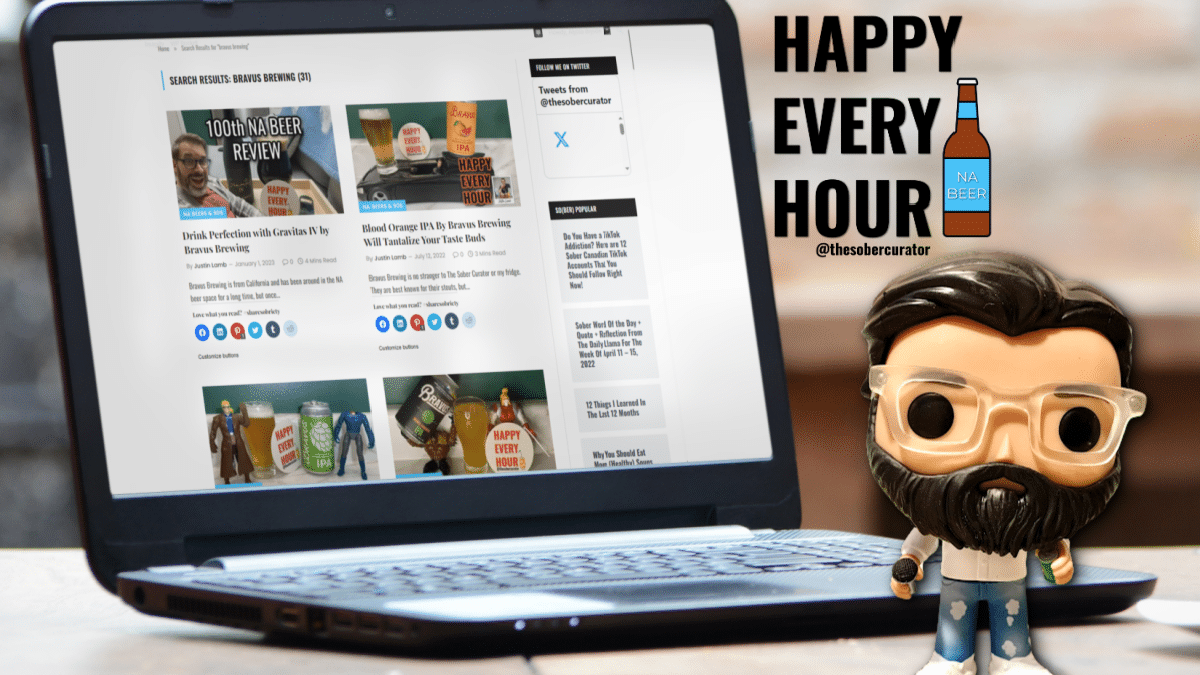
Justin Lamb: On the note of stouts- yeah, I’m calling it that- Gravitas, which is your barrel age stout. This is the fifth run. Correct?
Philip Brandes: Yeah, it’s number 5. We did it prior, but this is really the fifth iteration of Gravitas in this nice-looking bottle here.
Justin Lamb: To your credit, they’re so fucking good! There are two things when I quit drinking that I couldn’t find a replacement for: One is single malt Scotch. You’re not going to make a nonalcoholic single malt Scotch. It’s not going to happen.
Philip Brandes: Well hold on! We’re working on something. You’re right. The ways in which some companies have tried to attempt the burn and the mouth feel through chili peppers, I think that’s what they do, it’s disgusting. It’s the wrong kind of burn, too. It’s the back of the throat accumulating burn. That’s not an alcohol burn. I feel your pain, and we got something pretty good in the pipes here. You’re not going to replace a single malt, but maybe a blended Johnny Walker. I think we’ll get there. We’re working on it.
Justin Lamb: Oh yeah? Alright. Well, the second thing I couldn’t find a replacement for is the bourbon barrel-aged flavor in a in a good stout. How do you do that without the alcohol? That’s a huge piece of that flavor, as well and Bravus’ blends have changed over the years. Each iteration of Gravitas is a little different than the last. I’m curious about how that has worked out each year, because some seem to be a little more maple heavy, and some maybe on the sweeter side, and last year’s, Gravitas IV, was the best thing I have had. I’m curious about five because four was just perfect. The balance was great, the bourbon flavor was great, the maple was nothing was overpowering, it was all like complementing each other. It was perfect. So send me a case for free. No, I’m just kidding… or am I?
But I’m wondering what did that start as, getting a barrel-aged now alcoholic beer, and then how has that recipe changed over the years that that it’s created the different iterations and become such a limited thing? What does that look like on your end?
Philip Brandes: It was inspired by the bourbon counties of the world and so we were like, we gotta do something similar. The trick was, how do you get that, because as you said, barrel-aging lends quite heavy to its contents so we gotta figure that out. It took us a while, but it was something I knew we had to do, and not just from a taste perspective, but half the battle with nonalcoholic beer is getting something in your hand that’s looks like a beer and tastes like a beer. Part of it is just having something you’re finally proud of to throw up on the table. People are like ‘Whoa! What the hell is that?’ and then you give them a sip, you don’t tell them they’re not alcoholic and none of them will believe you.
In looking at the various styles that have come out with alcoholic barrel-aged beers, we kind of wanted to emulate some of them, and so I went off reservation one year with a cordial- like a dark cherry. It was good. I loved it, but to your point, I think last year, I was blown away. I think you liked it because it did have the very pronounced that sort of, they call it raisin, but it’s this very bourbon sort of flavor to barrel-aged stouts that you see, and also the body, too, which is something we worked on for a long time, because NA beers tend to be thin. That’s when we’re trying to emulate and get the process down to develop some body, cause you need that, too.
You’ll love this year’s. This year was different because we put some rum in it, as well. So it’s got a little bit of rum to it, which is nice, a little bit of sweetness from the rum, a little bit of bourbon, but it’s far more pronounced. Like a stout, too, that beer straight out of the fridge is far different than that beer sitting for 20 minutes on the counter before you enjoy it. You’ll start seeing the notes: the chocolate, caramel, the coffee, the maple- they start opening up, which is kind of neat.
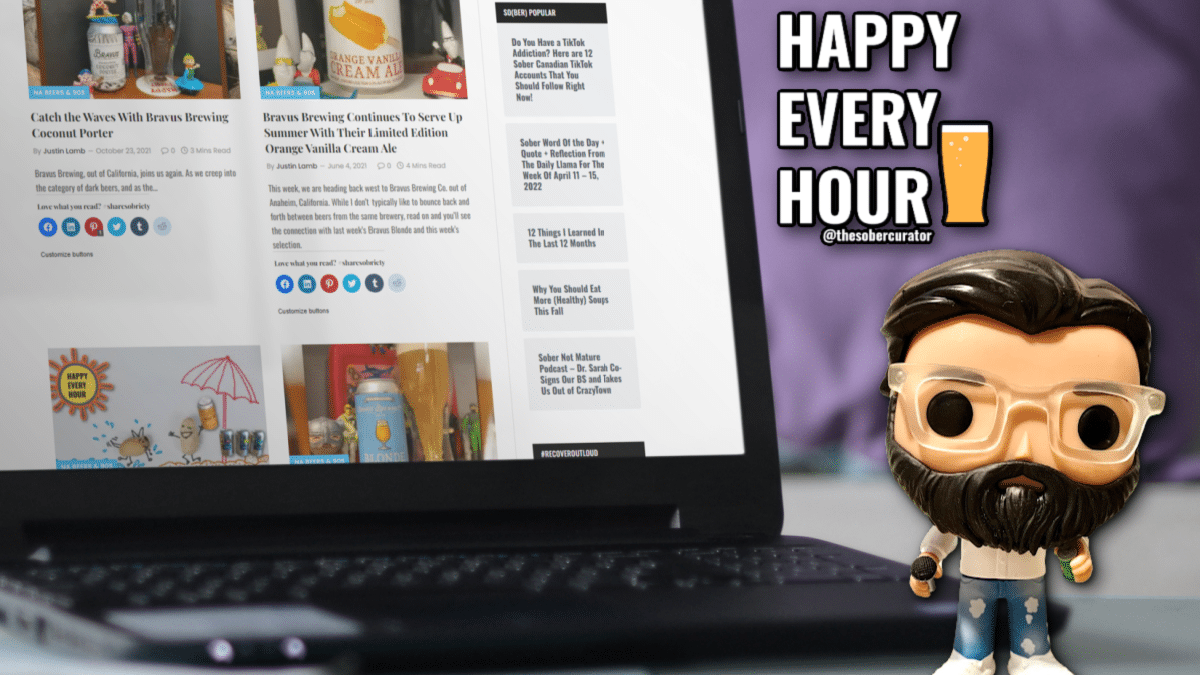
We’re trying to change that stigma. We’re trying to make NA beer rival some of the best alcoholic iterations and look, a 22% ABV is going to be hard, but those things are just all heat and it’s like getting the hottest hot sauce: at some point, it’s just burn. There’s worth the flavor. I think it’s kind of a funny way of how we approach it. Approach it here. We’re trying to get the best of both worlds and we’re using that technology that we developed to start creating some of those whiskeys and spirits and RTDs, as well.
Justin Lamb: Well, I’m excited about Gravitas V. I obviously maxed my order out and look forward to it arriving. Like I said, last year’s Gravitas is going to be a tough act to follow. I almost expected a press release from you guys being like, “Hey, we screwed up. This one’s actually alcoholic.”
Philip Brandes: [laughter] Well, look, I mean we’ve always pushed the envelope. We always try to push the envelope in the name of science and God knows we’ve taken a couple of steps backwards. It’s just that. It is what it is. I think you have to in order to innovate. We never know until it gets out there in wide release and it’s a hard thing. It goes through quite a bit of being bounced around. It goes through heat. It goes through cold. It’s goes through more things than most beers do with DTC (direct-to-consumer), since it’s only a DTC release.
But going back to production, right? Beer is a beer you can make. Anyone can make a beer. It’s hard to make a beer consistent. Packaging is the hardest part of your distribution and getting it out there. There are so many things fighting against you. When you put that beer into a can or a bottle, you’re caging it up, you’re sending it out and it wants to get out. It’s a big science experiment. So, we’ll see what happens.
Justin Lamb: Well, I’m pumped about that! The last thing I want to talk to you about is the sober space and I’m wondering where you personally identify in relation to that and where you see Bravus in there. What’s that relationship?
Philip Brandes: When we first started it was predominantly three different groups: the can’t-havers, recovery, and health. With health being more so like medication that you can’t mix with alcohol and then health in general, and obviously, the other groups like pregnant and religion. But we learned early on in making a good product, we got our hand slapped by a few people in the community saying, “Look, Don’t target us. Your beer is pretty realistic. You could cause someone to get back on the wagon. That’s not a good thing.” So, I said, you know that that makes sense. So, really, sobriety for us wasn’t a target. We just make something really good, and if they like what they like, they’ll join, and now it’s changed so much. The big driver now is health and wellness. It’s the biggest driver of NA. In order for this category to grow, we really have to look at this as more of a beverage. It’s good. It’s good for you. It tastes good. Pairs well with a cheeseburger. Recovery was a big driver, I know it still is, but for us, in terms of marketing, and who our large consumer is, it’s really sort of that zebra striper who loves to have a beer but also is trying to be a bit better in in terms of calories or just overall health, and will weave in a nonalcoholic beer.
Justin Lamb: That’s a great place to kind of wrap up. I think we covered a lot of our bases there.
Philip Brandes: I appreciate the support. The biggest thing we all need is awareness and so I appreciate all those involved in trying to spread the word and really getting us there. I’m still amazed that people still, to this day, do not know that quality of great taste and beer exists. It’s just our job here to help spread the word.
Justin Lamb: That’s what I’m down here doing. So, I appreciate you providing the resources for me to promote. You keep brewing ‘em, I’ll keep reviewing ‘em.
Philip Brandes: Awesome. Alright, man, take care!
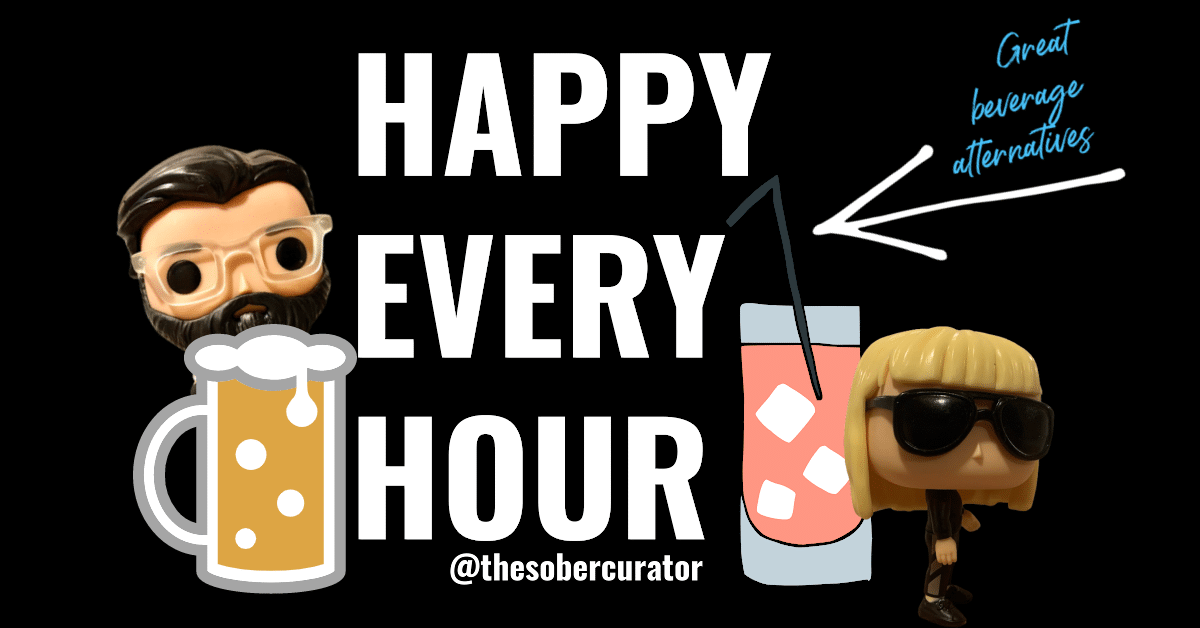
HAPPY EVERY HOUR: We know we mix a mean mocktail. HAPPY EVERY HOUR will keep you updated on the latest and most significant trends in NA craft beers, mocktails and zero-proof beverages.
TRIGGER WARNING: People in early sobriety may want to proceed with caution. Always read labels. Please hydrate responsibly … because drunk never looks good.
THE BEVERAGE CATEGORIES:
Do you love Non-Alcoholic Craft Beers and the 90s? Then you’re in for a treat! Sober Curator Justin Lamb is dedicated to tasting great (sometimes not so great) NA beers and showcasing his fantastic collection of memorabilia from the ’90s.
NA Bevies & Mocks brings you mocktail recipes, NA beverage reviews, along with NA wine & spirit alternatives
Manic Monday got you in a panic? Fear not! Tonix Mocktail’s brings you Just a Merry Monday MOCKTAIL recipe, review, and how-to section bring fun and clever mocktail treats and tips to customize your at-home zero-proof bar.
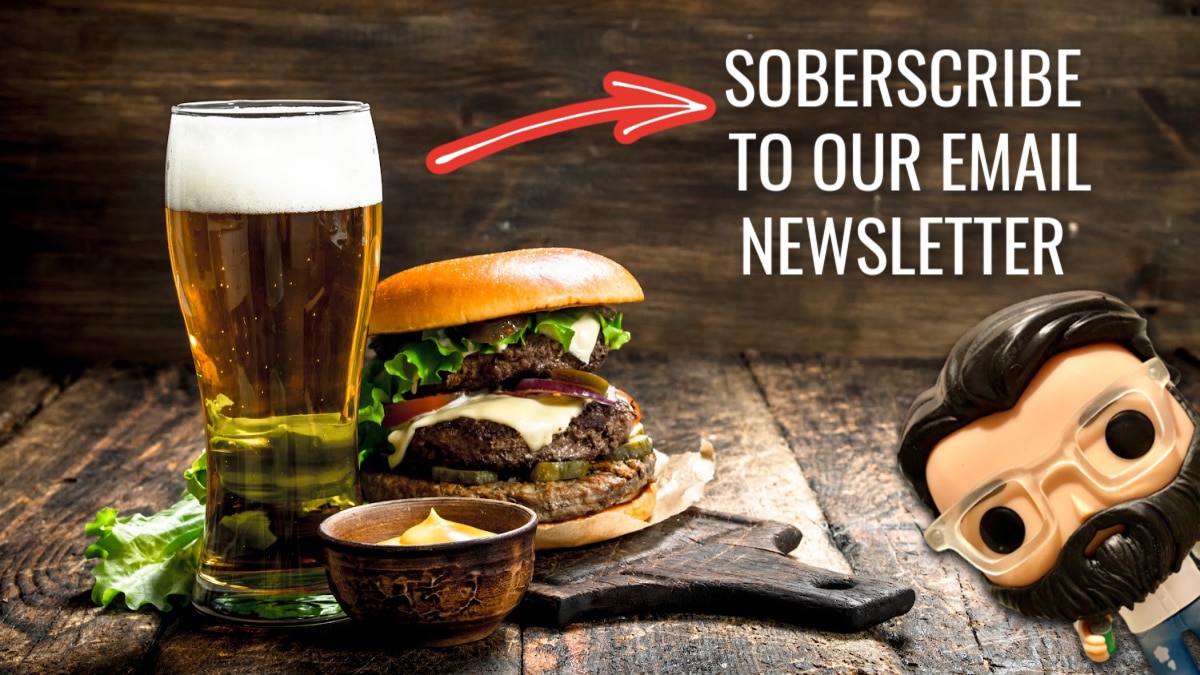
Resources Are Available
If you or someone you know is experiencing difficulties surrounding alcoholism, addiction, or mental illness, please reach out and ask for help. People everywhere can and want to help; you just have to know where to look. And continue to look until you find what works for you. Click here for a list of regional and national resources.
Resources Are Available
If you or someone you know is experiencing difficulties surrounding alcoholism, addiction, or mental illness, please reach out and ask for help. People everywhere can and want to help; you just have to know where to look. And continue to look until you find what works for you. Click here for a list of regional and national resources.
